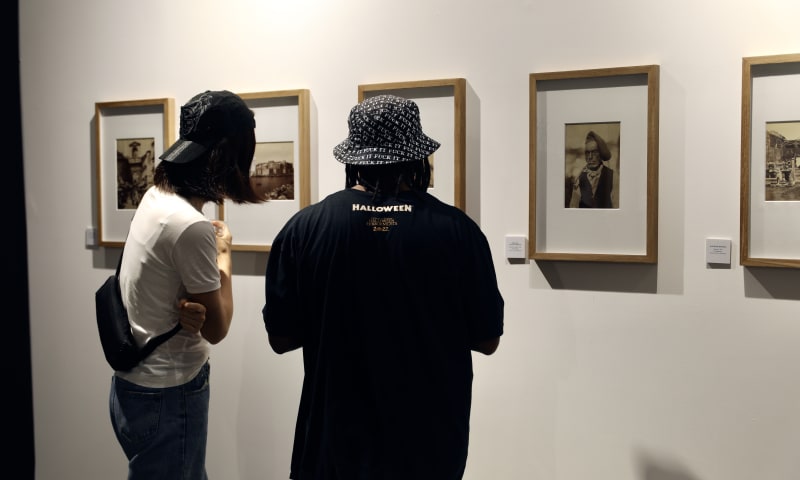Photographers: Alfred Noack, Carlo Naja, Leopoldo Alinari, Giacomo Brogi, Alphonse Bernoud, Edmond Behles, Robert Rive, Giorgio Sommer, Gioacchino Altobelli, James (Domenico) Anderson, Robert MacPherson, Giacomo Caneva, Antonio and Paolo Francesco D’Alessandri, Giovanni Crupi, Giuseppe Incorpora, Wilhelm Plüschow, Wilhelm von Gloeden and Achille Mauri
Curated by Michele Bonuomo and Mara Firetti
Firetti Contemporary is pleased to announce the opening of The Grand Tour: A photographic journey in Italy. The exhibition will be inaugurated by His Excellency Dr. Claudio Rammuno, Deputy Head of Mission, First Secretary and Head of the Consular Chancery Italian Embassy, Abu Dhabi.
For the first time in the United Arab Emirates, forty vintage photographs and four original albums by the most prominent photographers working in Italy between 1850 and 1890 will be exhibited, allowing viewers to experience the beauty and grandeur of Italy's scenic history. Attendees will enjoy the nostalgia of “must-see” tour destinations in famous cities such as Milan, Venice, Florence, Rome, Naples, Pompeii, Palermo, Taormina, and others.
Curated by Michele Bonuomo and Mara Firetti, the exhibition will include the great works of legendary photographers such as Alfred Noack, Carlo Naja, Leopoldo Alinari, Giacomo Brogi, Alphonse Bernoud, Edmond Behles, Robert Rive, Giorgio Sommer, and Gioacchino Altobelli, James (Domenico) Anderson, Robert MacPherson, Giacomo Caneva, Antonio, and Paolo Francesco D’Alessandri, Giovanni Crupi, Giuseppe Incorpora, Wilhelm Plüschow, Wilhelm von Gloeden, and Achille Mauri.
Created to capture memories of the cultural heritage which formed part of their identity, The Grand Tour was an exciting journey developed by legendary photographers, who set out to tour the great cities of Europe seeking history and art. Their journey took them through famous capitals such as London and Saint Petersburg, to the iconic cities of Italy, or the ancient “garden of the empire,” as referred to by the famous philosopher Dante Alighieri.
The photographs, which were among the most sought-after souvenirs of their adventures, were usually produced by Europe’s major photographers of the second half of the nineteenth century, at a time when owning a camera was a privilege enjoyed by only a few. At the end of the seventeenth century, The Grand Tour had evolved into a cultural education ritual for Europe's young aristocrats, serving as a training trip with an itinerary that included the sites of Classic and Renaissance culture. Meeting new people and learning about their own origins, allowed them to gaze upon, romantically contemplate, and admire the ruins of a great civilization such as ancient Rome, as well as the Renaissance art and architecture that inspired many Northern European artists.
The Grand Tour was synonymous with wealth and cultural appeal. Italy was the preferred destination because it was – and still is – rich in works of art and remains of ancient architecture which, for the European culture of the day, represented both the essence of the Roman world and the Renaissance. By the middle of the nineteenth century, many tourists were visiting Italy. And if up to that moment the most popular “souvenirs” were engravings and paintings of landscapes and monuments, they were quickly eclipsed by photography.
Given that photography was in its infancy, and used only by professionals, most travellers who didn't own cameras purchased these pictures as keepsakes along stops of their trips. By the early 1850s, The Grand Tour had begun championing the rapid development of photography and its respective markets, with countless photographic studios springing up and flourishing primarily in the art cities of its itinerary.
As the market continued to grow, studios began exploring different sale strategies, eventually producing albums that contained a series of images representing summaries of the cities, their monuments, works of art, panoramas, and everything worth seeing. Urban architecture often took second place to archaeological ruins: the Roman Forum was more photographed than Saint Peter’s Basilica, and the excavations at Pompeii more than the Bay of Naples.
Today photographs are amongst the most collected memorabilia, with entire platforms dedicated to the storage and compilation of online albums by both professional photographers and everyone else. While recent advances in technology have made it possible for anyone with a smartphone to instantly take and view high-resolution images, nothing compares to the nostalgia and rich history of vintage photography.
With this exhibition, Firetti Contemporary opens its doors to cross-cultural exchange of Italian history and culture through the medium of photography.

